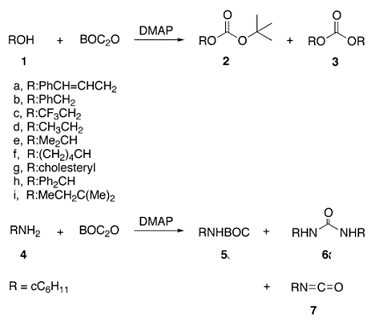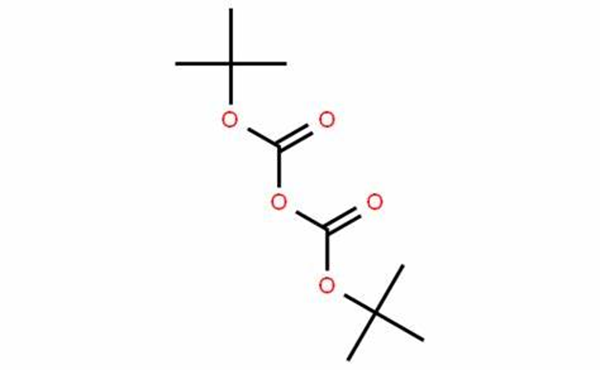The synergistic effect of di-tert-butyl dicarbonate
Di-tert-butyl dicarbonate ( Boc2O) is mainly used to introduce a tert-butoxycarbonyl (Boc) protecting group to protect an amino group (especially an amino group of an amino acid), and is one of the commonly used reagents for organic synthesis. It is widely used in the industries of peptide synthesis , medicine, cosmetics and the like. Compared with other amino protecting reagents, di-tert-butyl dicarbonate has many advantages: it is cheap, has no strong irritating odor, is less toxic to the human body, and is easy to remove after reaction, and the like [1].
In synthesis reaction, Boc2O is always used with 4-(Dimethylamino)pyridine (DMAP), which works as a couple. In some cases Boc2O is also used as an apparent dehydrating agent when it reacts with carboxylic acids, certain hydroxyl groups or with primary nitroalkanes. In the conversion of nitroalkanes by Boc2O to nitrile oxides, scientists have shown that the DMAP catalyst is essential and in its absence no reaction occurs.

Scheme 1 Reactions of Aliphatic Alcohols and Primary Amine with Boc2O-DMAP
The efficiency of the Boc2O/DMAP couple in dehydrations of nitroalkanes prompted scientists to study reactions of other functional groups, like amines and alcohols, with Boc2O in the presence of DMAP under different conditions from the point of view of synthetic applications as well as a mechanism. Although the reactions of amines as well as of alcohols with Boc2O in the presence of DMAP are known, scientists recently found that in addition to the expected N-Boc and O-Boc derivatives other products were formed, sometimes in large amounts (Scheme 1). For instance, cinnamyl alcohol 1 reacted (in MeCN at room temperature) with Boc2O/DMAP to give the expected O-Boc derivative 2, but unexpectedly a symmetrical carbonate 3 was also isolated (ratio of 2:3 = 1:1). Furthermore, reaction of cyclohexylamine 4 with Boc2O (1.5 equiv) and DMAP (0.1 equiv) led mainly to formation of urea. The same reaction at 0 °C gave 80% of isocyanate 7. Formation of isocyanates and ureas from reaction of primary amines with Boc2O/DMAP was reported by Knölker and co-workers.
Since Boc2O and DMAP are widely used for protection of substrates that contain amine and alcohol functional groups, scientists decided to establish the major products as well as side products that can be formed in such reactions and if possible find reaction conditions that will reduce or totally prevent the formation of unwanted products.
reference
[1]https://zh.wikipedia.org/wiki/%E4%BA%8C%E7%A2%B3%E9%85%B8%E4%BA%8C%E5%8F%94%E4%B8%81%E9%85%AF
[2] Yochai Basel, Alfred Hassner, Di-tert-butyl Dicarbonate and 4-(Dimethylamino)pyridine Revisited. Their Reactions with Amines and Alcohols, J. Org. Chem. 2000, 65, 20, 6368-6380
You may like
Related articles And Qustion
See also
Lastest Price from Di-tert-butyl dicarbonate manufacturers

US $0.00-0.00/kg2025-09-26
- CAS:
- 24424-99-5
- Min. Order:
- 1kg
- Purity:
- 99%
- Supply Ability:
- 1

US $50.00-10.00/kg2025-09-02
- CAS:
- 24424-99-5
- Min. Order:
- 1kg
- Purity:
- 99%,Electronic grade(Single metal impurity≤ 100ppb) or pharmaceutical grade
- Supply Ability:
- 100kg




